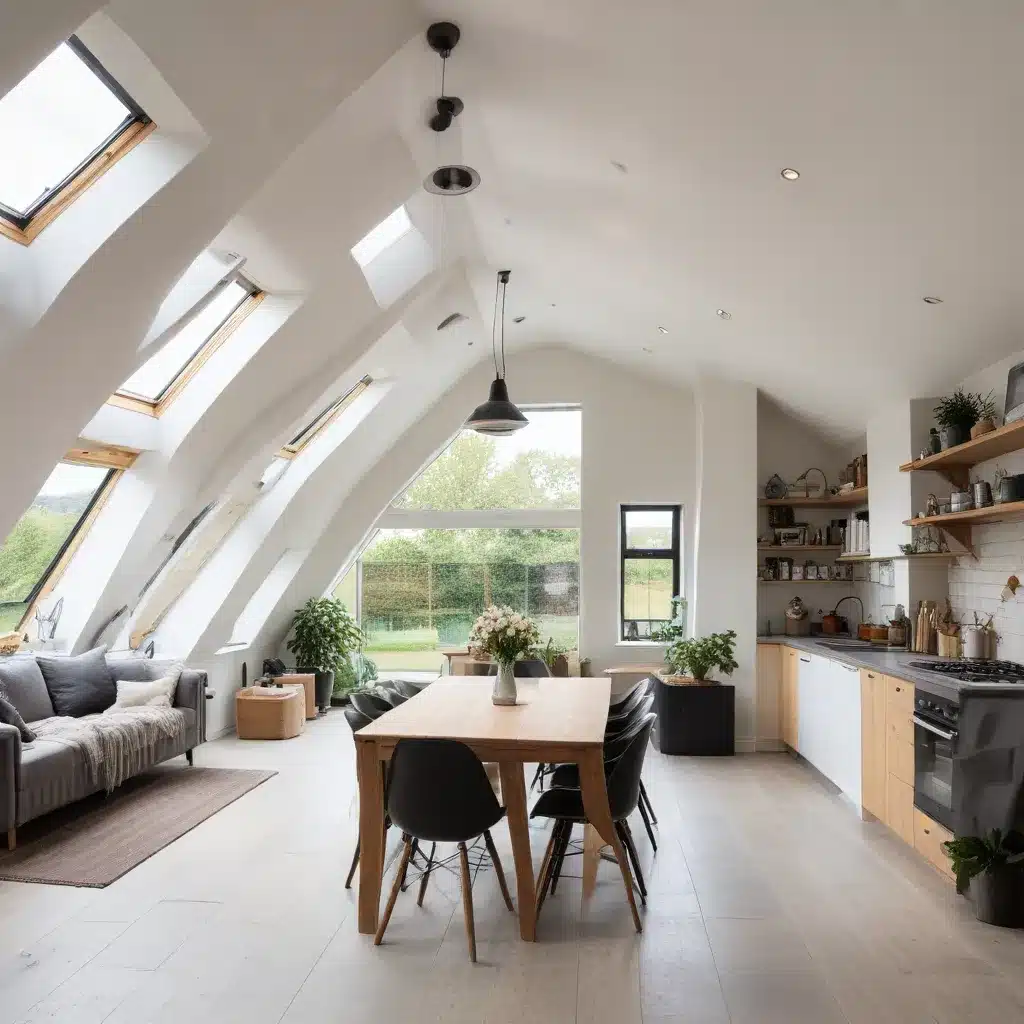
Unlocking the Potential of Underutilized Spaces
Loft conversions have become an increasingly popular home renovation choice, allowing homeowners to maximize their living space without the need for costly extensions or relocations. As the demand for sustainable living grows, the latest trends in loft design are now embracing eco-friendly practices, transforming these once-forgotten attic spaces into stylish and environmentally conscious sanctuaries.
In this comprehensive guide, we’ll dive into the world of sustainable loft conversions, exploring the latest design trends that are reshaping the way we think about our homes. From harnessing natural light to incorporating recycled materials, we’ll provide practical tips and expert insights to help you create a loft that is not only beautiful but also mindful of its environmental impact.
Maximizing Natural Light: The Key to Bright and Airy Loft Spaces
One of the standout trends in sustainable loft design is the focus on maximizing natural light. Large skylights and strategically placed roof windows have become increasingly popular, allowing homeowners to flood their loft spaces with the warmth and glow of the sun.
“Integrating bi-fold doors or glass panels in gable walls is another trend that brings the outdoors in, creating a seamless connection between the loft and the exterior,” explains Jane Smithson, a seasoned interior designer with over a decade of experience in sustainable loft conversions.
By embracing natural light, not only do loft spaces become brighter and more inviting, but the need for artificial lighting is significantly reduced, leading to substantial energy savings and a lower carbon footprint.
Embracing Hybrid Spaces: Flexible and Multifunctional Loft Design
Another emerging trend in sustainable loft conversions is the concept of hybrid spaces, where multiple functions coexist harmoniously within the same area. Homeowners are increasingly seeking versatile designs that allow them to use their lofts for a variety of purposes, adapting the space to their evolving needs.
“Folding or sliding partitions, movable furniture, and convertible features are utilized to create separate zones within the loft that can be easily reconfigured as needed,” explains John Harrington, a loft conversion specialist with a focus on sustainable design. “This trend caters to the changing lifestyles of homeowners, who require their spaces to serve multiple purposes without compromising on style or functionality.”
By embracing hybrid spaces, homeowners can maximize the utilization of their loft, reducing the need for additional construction or the purchase of separate dedicated spaces, ultimately contributing to a more sustainable living solution.
Sustainable Materials: Embracing Eco-Friendly Choices
Sustainable design is at the forefront of loft conversion trends, with homeowners increasingly prioritizing eco-friendly solutions. The use of recycled and reclaimed materials, such as reclaimed wood flooring or repurposed furniture, is a popular choice that not only reduces waste but also adds a unique character to the space.
“Incorporating energy-efficient lighting, insulation, and heating systems not only reduces the home’s carbon footprint but also lowers utility bills,” says Emily Blackwood, a LEED-certified architect specializing in sustainable loft conversions. “Installing solar panels on the roof of the loft is another sustainable trend that can provide clean energy and further reduce the home’s environmental impact.”
By carefully selecting sustainable materials and integrating green technologies, homeowners can create a loft that is not only visually appealing but also environmentally responsible, setting a positive example for the community.
Blending Old and New: Preserving Architectural Heritage
Many loft-style offices are created by renovating historic buildings, offering a unique blend of old and new. This approach preserves architectural heritage and infuses workspaces with character and charm that cannot be replicated in new constructions.
“Exposed brick walls, wooden beams, and large factory windows serve as reminders of the building’s history, while modern furnishings and technology ensure that the space meets contemporary work requirements,” explains architectural designer, Sarah Thompson. “This fusion of past and present embodies a respect for tradition coupled with an eagerness to innovate, reflecting the dual priorities of honoring heritage while embracing the future of design.”
By repurposing existing structures, loft conversions significantly reduce the environmental impact associated with new constructions, making them a sustainable choice for homeowners and businesses alike.
Integrating Smart Technology: The Future of Loft Conversions
The integration of smart technology is an emerging trend in loft conversions, with homeowners increasingly incorporating voice-controlled lighting, automated blinds, and climate control systems into their loft spaces.
“These technologies not only add convenience but also improve energy efficiency,” says Alex Fernandez, a sustainable design consultant. “Smart thermostats can regulate the temperature of the loft based on occupancy and weather conditions, reducing energy wastage. Integrating smart entertainment systems such as wireless speakers further enhance the loft’s functionality and connectivity.”
By embracing smart home technologies, homeowners can create a loft that is not only stylish and sustainable but also highly efficient, contributing to a more eco-conscious lifestyle.
Conclusion: Designing for a Greener Future
As the demand for sustainable living continues to grow, the latest trends in loft conversions offer homeowners a unique opportunity to transform their underutilized spaces into eco-friendly sanctuaries. From maximizing natural light to incorporating recycled materials and smart technologies, the future of loft design is undoubtedly green.
By embracing these sustainable design trends, homeowners can not only enhance the value and functionality of their properties but also make a meaningful contribution to the environment. As we strive to create a more sustainable future, loft conversions that prioritize eco-friendly practices set a shining example for the wider community.
Ready to embark on your sustainable loft conversion journey? Explore the wide range of services offered by Local Builder London to bring your dream loft to life while minimizing your environmental impact. Let’s design a greener, brighter tomorrow – one loft at a time!


